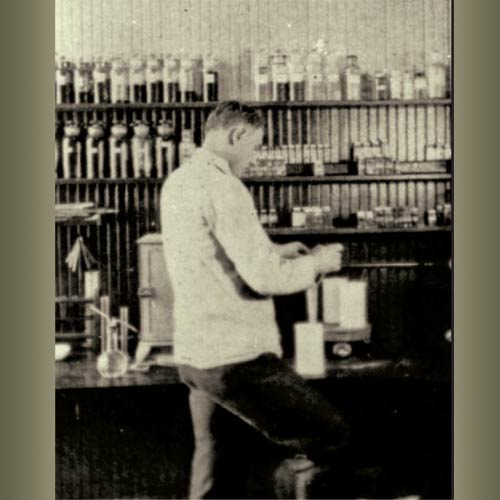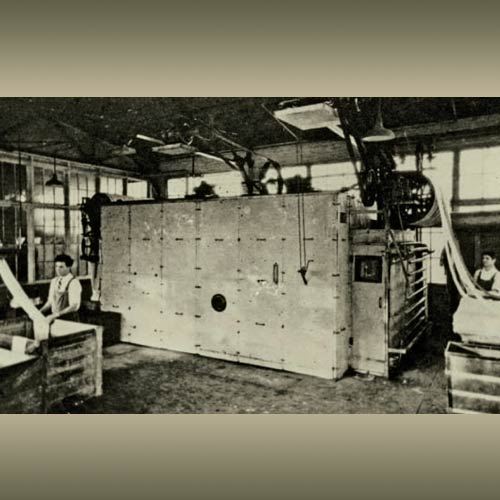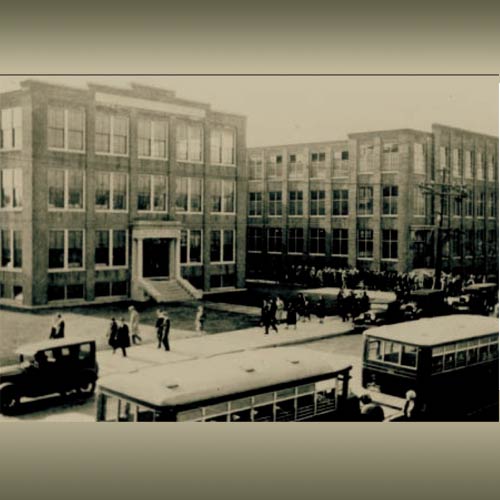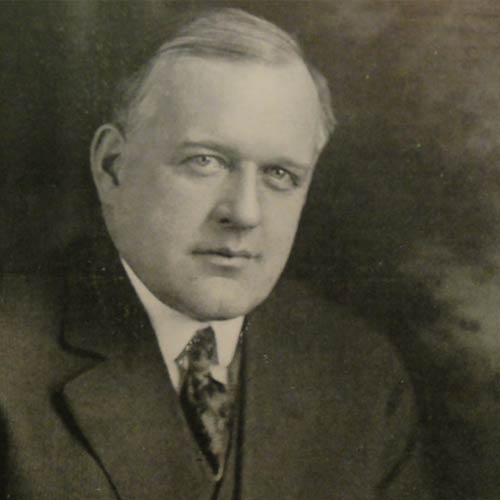FOR A RAREFIED few, a lifetime’s work begets a legacy. Such was the case for George Frederick Earnshaw, founder of what is now known as Earnshaw’s magazine, formerly The Infants’ Department. Nearly threequarters of a century after his death, the magazine continues on, guiding the newest generation of childrenswear retailers. While today’s retailers associate the […]
- Earnshaw Knitting Mills color lab.
- Inside Earnshaw Knitting Mills
- The Earnshaw Knitting Company factory in Newton, MA.
- G.F. Earnshaw.
FOR A RAREFIED few, a lifetime’s work begets a legacy. Such was the case for George Frederick Earnshaw, founder of what is now known as Earnshaw’s magazine, formerly The Infants’ Department. Nearly threequarters of a century after his death, the magazine continues on, guiding the newest generation of childrenswear retailers. While today’s retailers associate the name Earnshaw with the magazine, retailers in the first half of the 20th century knew him as the force behind Earnshaw Knitting Company, Earnshaw Sales Company and Earnshaw Publishing. George F. Earnshaw was a person who saw opportunities everywhere he looked – and seized them.
Born in West Roxbury, MA, on July 1, 1871, George F. Earnshaw attended Boston Latin School and then worked as a salesman at Johns Manville Co. In 1905, he married Margaret Wright of Lowell, MA, in the Boston suburb of Medford and went on to have six children, possibly inspirations for his career in childrenswear.
In 1911, Earnshaw moved to Chicago, where he founded Earnshaw Knitting Company. The company developed a layette line, under the label Vanta, based on the principle that it’s safer to dress children without pins or buttons. In 1912, he patented “twistless tape,” noting that the available narrow strips of fabric used to fasten clothes, called “tapes,” would curl after being washed, making them hard to tie. Twistless tape would do no such curling and would be very useful in securing an infant’s garment. From this concept, he created a host of layette products – some of which were afforded patent protection, like a child’s sleeping garment (patented in 1917) and a playsuit (patented in 1932) that was crafted with doctors’ current wisdom in mind – that daily sun baths were healthy for infants.
With a commitment to helping grow his retail clients’ businesses, in 1917, Earnshaw began to produce what was to be his most lasting legacy: a magazine called The Infants’ Department, a more elaborate iteration of a pamphlet Earnshaw Knitting Company distributed called “Bigger Business,” that was intended as a free exchange of ideas and techniques amongst infants’ wear retailers. He said it was an experiment on increasing business and getting mothers’ trade.
He tapped veteran retailer Flora Krauch as editor and built a staff that included editors, writers and merchandise experts, ensuring that the magazine’s voice was peer-to-peer. Earnshaw was so committed to improving the infant retail business that in early 1918 (after he had doubled the manufacturing capacity of Vanta childrenswear), he even publicized that his goal was to double business in department stores’ infant wear sections. He also offered to put up a bond to help retailers take advantage of their growth plan, which did not include any obligation to stock Vanta baby products.
The Infants’ Department was ostensibly a custom publication in the early years, offering advice for sales and retail strategies, trends and tips, and humorous and sometimes painfully honest positions on the infants’ retail business, always accompanied by Vanta product advertisements. Within the pages of the book, Earnshaw campaigned to separate infants’ and children’s goods from adults’ in department stores, arguing that compiling all child-related goods in one place would serve the client and drive business to the store.
In May 1921, The Infants’ Department took its first advertising pages, and Earnshaw declared: “The magazine is read monthly by 9,000 women who manage the Infants’ and Children’s Wear departments of the leading department stores of the country, as well as by merchandise managers and hundreds of salespeople who find its pages practical suggestions for increasing the business of the Department.”
Later, in 1922, Earnshaw moved the Earnshaw Knitting Company from Chicago to Newton, MA, not far from his childhood home. The manufacturing business that began with a handful of workers in Chicago had grown to more than 1,000 employees. In 1928, he resigned as president of the manufacturing company.
On the editorial side, Earnshaw identified and broke down issues that affected his readers. For instance,when resources like wool were scarce at the end of World War I, The Infants’ Department detailed the status of the wool industry – illustrating the issue by doing the math on available sheep in the United States – so retailers understood exactly why prices were escalating, enabling them to explain these things to their clients more effectively. In May 1931, while retailers were reeling from the Great Depression, Earnshaw advised that shopkeepers shouldn’t discount infants’ goods too heavily unless the end result was increased volume. To Earnshaw, mothers were practical and did not buy items just because they were marked down. Earnshaw’s opinions were often masked in humor: In one issue, he quipped about the U.S. Postal Service, noting it inadvisable to send an infant via mail, as by the time he would arrive to his destination, he’s likely to be full grown. Earnshaw’s enthusiasm for increasing apparel retailers’ bottom lines never waned. In January 1938, he unveiled another business-boosting brainchild: “National Children’s Week.” Through this week of marketing, promotions, festive window displays and educational opportunities, he sought to restore February’s volume of spring selling.
He declared that National Children’s Week – February 14-20 – was “just as important as a going-back-to-school period in August and September.” The festive week had the noble cause “to serve the childhood of America, rather than to just make clothes for profit” and was a win-win, according to Earnshaw, functioning as “a trade builder and a profit maker in an atmosphere of customer goodwill and Mother Love.”
George F. Earnshaw died on October 1, 1940, at age 69. Alas, in the years since his passing, the knitting company building was razed – Google lists the current business at the former address as a Papa Gino’s pizzeria – Vanta baby goods are no longer on the shelves and his Newton, MA, home changed hands several times – most recently in 2002 for northwards of $4 million. But other things continue on the same missive he had set in 1917. Under a fourth generation of ownership, Earnshaw’s magazine is still a pioneer in the children’s retail community – and continues to serve the brands and businesses upon which George F. Earnshaw made an indelible mark with his innovation, vision and a keen eye for opportunity.







Leave a Comment: